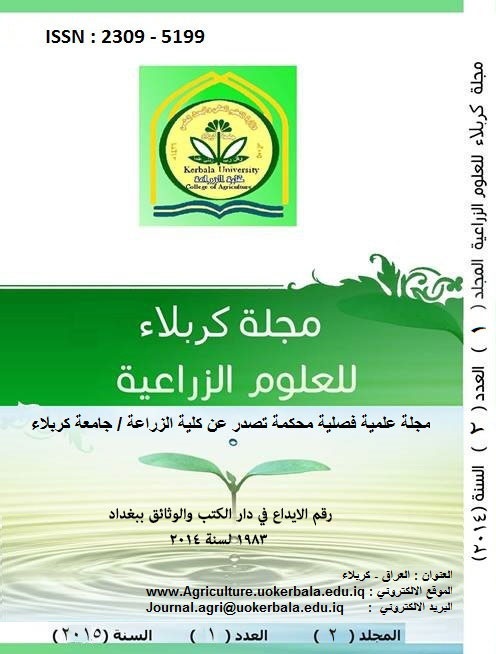Relationship Among Hemoglobin Types with Some Productive Traits in Holstein Cows
DOI:
https://doi.org/10.59658/jkas.v3i1.527Abstract
This study is conducted in Dairy Cattle Farm and the Physiology Laboratory, College of Agriculture, Department of Animals Resources, Abu-Ghraib and also in a Laboratory dealing with the analysis of genetic for the period 1/11/2013 to 7/11/2014. The objective of this study is to identify the hemoglobin type and the relationship among these types with some growth and production of 54 Holstein cows and 39 progeny. The percentage of types of Hemoglobin distribution in a sample of Holstein cows in this study is 62.96, 27.78 and 9.26 % for the types AA, AB and BB respectively and the differences are highly significant. The highest average milk yield and lactation period is in the type BB as compared with the type AA and AB. The percentage of milk components is significantly influenced (P<0.05) or (P<0.01) by the Hemoglobin types except the percentage of ash in the milk. There are a significant differences (P<0.05) in the weight at birth with the Hemoglobin types, while the other body measurements are not influenced at this age. There are a significant differences (P<0.05) in body weight and body length at weaning due to the differences in Hemoglobin types and also the gain weight among difference ages is influenced by different Hemoglobin in types in their dams.it can concluded that Hemoglobin type can be use of as a markers to put the method of genetically improvement strategies for the cattle to increase the economical income from these cattle farms by selection and type crossing which give a good performance.
Downloads
Published
How to Cite
Issue
Section
License
Copyright (c) 2016 Copyright (c) 2024 is the Author's article. Published by the Journal of Kerbala for Agricultural Sciences under a CC BY 4.0 license

This work is licensed under a Creative Commons Attribution 4.0 International License.
Licensing Terms
All articles are published under a Creative Commons License and will be directed to the Creative Commons Attribution 4.0 International License (CC BY 4.0) That permits use, distribution, and reproduction in any medium, provided the original work is properly cited. This license also allows the work to be used for commercial purposes.
Use by both non-commercial and commercial users
This content is licensed under a Creative Commons Attribution 4.0 International (CC BY 4.0) license, permitting use by both non-commercial and commercial users. Individual users may access, download, copy, display, and redistribute the articles to colleagues, as well as adapt, translate, and text- and data-mine the content, subject to the following conditions:
- The author's moral rights, including the right of attribution and the right to protect their work from derogatory treatment, are respected.
- Where content in the article is identified as belonging to a third party, users must ensure that any reuse complies with the copyright policies of the owner of that content.
- If the article content is reused for research or educational purposes, users should maintain a link to the appropriate bibliographic citation, including the DOI and a link to the published version on the journal's website.

